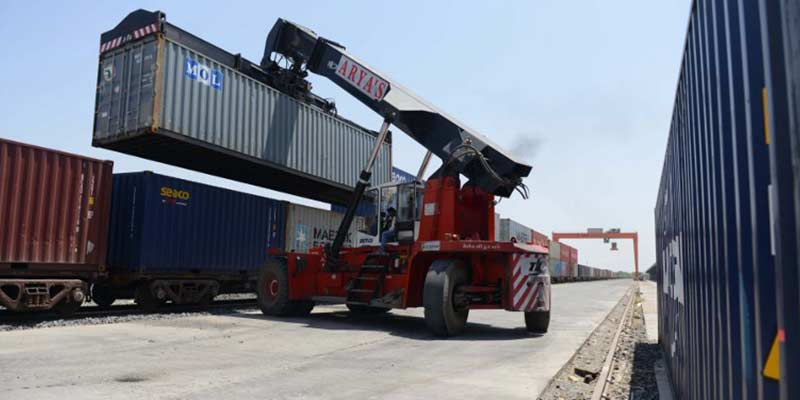- India
- Jun 15
- Kevin Savio Antony
Exports grew 9%, but trade gap widened to 7-month high in May
India’s merchandise exports rose by 9.1 per cent to $38.13 billion in May even as the trade deficit widened to a seven-month high of $23.78 billion during the month, according to government data.
Key Analysis:
• Healthy growth in sectors, such as engineering, electronics, pharmaceuticals, textiles and plastics helped register growth in exports despite global economic uncertainties.
• Imports also increased by 7.7 per cent to $61.91 billion in the month under review from $57.48 billion in May 2023 due to an increase in crude oil imports.
• Oil imports rose by 28 per cent to $20 billion in May. It was up by 24.4 per cent during April-May 2024-25 to $36.4 billion.
• However, gold imports dipped marginally to $3.33 billion in May this year from $3.69 billion in the same month of FY24.
• The previous high in the deficit was recorded in October 2023 at $31.46 billion.
• In April 2024, the outbound shipments dipped to $41.68 billion from $41.96 billion a year ago.
• Cumulatively, exports during April-May this fiscal rose by 5.1 per cent to $73.12 billion and imports rose by 8.89 per cent to $116 billion.
• India’s shipment to the top five export destinations — the US, the Netherlands, UAE, Malaysia, and the UK — recorded healthy growth in May.
What are the reasons behind India’s trade deficit?
1) High Domestic Economic Growth:
India’s economy is growing at over 7 per cent, significantly outpacing the global growth rate of about 2.6 per cent. This rapid growth increases domestic demand for goods, leading to higher imports.
2) Increased Imports:
• Oil Imports: Petroleum imports are a major contributor to the trade deficit. In May 2024, petroleum imports were valued at $19.95 billion, while exports were $6.77 billion.
• Gold Imports: Gold imports reached a three-month high of $3.33 billion in May 2024, contributing significantly to the trade deficit.
• Other Commodities: Imports of silver surged by over 400 per cent, while imports of pulses (181.3 per cent), transport equipment (31.9 per cent), and petroleum (28.1 per cent) also saw substantial increases.
3) Higher Domestic Demand:
The rapid economic growth leads to higher domestic consumption, which reduces the exportable surplus and increases the need for imports to meet domestic demand.
4) Sector-Specific Trends:
• Textiles: After several months of sluggishness, the textiles sector recorded nearly 10 per cent growth in May 2024, indicating a recovery.
• Engineering Goods: Exports of engineering goods grew by 7.4 per cent, with significant increases in electronics (23 per cent), drugs and pharma products (10.45 per cent), and plastics and linoleum (16.6 per cent).
5) Global Economic Conditions:
Global economic factors, including fluctuations in commodity prices and geopolitical issues, impact import and export dynamics. For instance, disruptions in major global shipping routes or geopolitical conflicts can affect trade balances.
6) Net Oil Balance:
A significant portion of the trade deficit is driven by the net oil balance.
The high value of petroleum imports compared to exports has a substantial impact on the overall trade deficit.
7) Structural Factors:
India’s reliance on certain imports, such as crude oil and gold, for domestic consumption and industrial use is a structural factor contributing to the trade deficit.
What Measures can be taken to control trade deficit
1) Trade Agreements: Negotiate and implement Free Trade Agreements (FTAs) with key trading partners. FTAs can reduce tariffs and other trade barriers, making Indian exports more competitive in international markets.
Example: The India-UAE Comprehensive Economic Partnership Agreement (CEPA) aims to reduce tariffs on over 80 per cent of bilateral trade, potentially boosting exports of Indian textiles, pharmaceuticals, and agricultural products.
2) Improving Export Infrastructure Invest in the development and modernisation of export infrastructure, such as ports, roads, and logistics networks.
Efficient infrastructure can streamline the export process, reduce transportation costs, and enhance the competitiveness of Indian goods in global markets.
3) Import Substitution: Encourage the use of domestic substitutes for imported products through public procurement policies and campaigns promoting locally made goods.
By substituting imports with domestically produced goods, the demand for foreign products can be reduced, helping to balance the trade deficit.
Example: Promoting the use of domestically produced steel in government infrastructure projects can reduce reliance on imported steel and boost the domestic steel industry.
4) Rationalising Imports: Analyse import data to identify non-essential or luxury goods that can be substituted with domestic alternatives.
By discouraging the import of non-essential goods and encouraging domestic production, foreign exchange outflows can be reduced.
Increasing tariffs on certain electronic items to encourage consumers to choose domestically produced options.
5) Skilling the Workforce: Invest in skill development programs to create a workforce equipped for modern industries.
A skilled workforce enhances domestic production capabilities, reducing reliance on imported goods and increasing the potential for exports.
Example: Establishing vocational training centers focused on key manufacturing sectors such as electronics, textiles, and automotive.
6) Managing Currency and Debt Levels Effectively: The Reserve Bank of India (RBI) should manage the rupee's exchange rate effectively, aiming for a balance that promotes exports without causing excessive depreciation. A stable and competitive exchange rate can make exports more attractive while maintaining the purchasing power of imports. The government should focus on fiscal consolidation to reduce its debt burden.
Rationale: A lower debt burden creates a more stable economic environment, fostering growth in domestic industries and making the economy more resilient to external shocks.
(The author is a trainer for Civil Services aspirants.)


